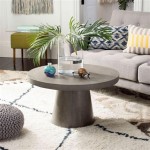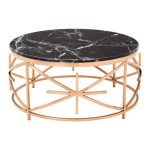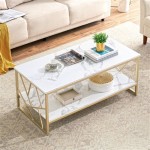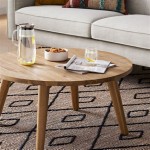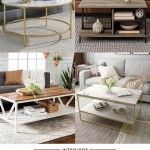Coffee Table Legs for Glass Top: A Comprehensive Guide
The coffee table, a ubiquitous piece of furniture in living rooms and reception areas, serves as both a functional surface and a stylistic anchor. A coffee table featuring a glass top offers a unique aesthetic appeal, showcasing the space beneath while providing a sleek and modern look. Selecting the appropriate legs for a glass-top coffee table is crucial for stability, visual harmony, and overall design integrity. This article provides a detailed exploration of considerations involved in choosing coffee table legs specifically designed for glass tops.
The primary concern when pairing legs with a glass top is ensuring a secure and stable connection. Unlike wooden or solid-surface tops that can be directly screwed or bolted to supporting structures, glass poses unique challenges. Drilling into glass weakens its structural integrity, making direct attachment impractical. Therefore, alternative methods of securing the legs must be employed, relying on friction, suction, or specialized hardware designed for glass attachment.
Beyond stability, the aesthetic properties of the legs play a significant role in the overall appearance of the coffee table. The style, material, and finish of the legs should complement the glass top and the surrounding décor. Considerations include the shape of the legs (e.g., tapered, cylindrical, hairpin), the material from which they are constructed (e.g., metal, wood, acrylic), and the finish applied (e.g., polished chrome, matte black, natural wood grain). The chosen legs should enhance the visual appeal of the glass top, creating a cohesive and balanced design.
Key Point 1: Attachment Methods for Glass Top Coffee Table Legs
Given the fragility of glass, selecting the appropriate attachment method is paramount. Several techniques are commonly used to secure legs to a glass top without compromising its integrity. These methods rely on specialized hardware and design principles to ensure a stable and lasting connection.
One popular method involves the use of adhesive discs or pads. These discs, typically made from a clear, high-strength adhesive material, are applied to the underside of the glass top and then pressed onto the top of the legs. The adhesive creates a strong bond between the glass and the legs, distributing the weight evenly. The effectiveness of this method depends on the quality of the adhesive and the surface area of the disc in contact with both the glass and the leg. It is essential to use adhesives specifically designed for glass to prevent damage or discoloration. Careful surface preparation, including cleaning and degreasing, is crucial for optimal adhesion.
Another method involves the use of suction cups. These cups, typically made from rubber or silicone, create a vacuum seal between the glass and the leg. The suction force holds the leg securely in place. Suction cups are often used in conjunction with other attachment methods for added stability. The effectiveness of suction cups depends on the cleanliness and smoothness of the glass surface. Dust, dirt, or imperfections can compromise the seal and reduce the holding power. Periodically cleaning the suction cups and the glass surface is necessary to maintain a secure connection.
Specialized metal brackets or clamps offer a more robust attachment solution. These brackets are designed to grip the edge of the glass top without applying excessive pressure that could cause cracking or breakage. The brackets typically feature rubber or felt pads to protect the glass from direct contact with the metal. The legs are then attached to the brackets using screws or bolts. This method provides a very secure and stable connection, particularly for larger or heavier glass tops. The design and finish of the brackets should complement the overall aesthetic of the coffee table. Concealed mounting hardware contributes to a cleaner and more refined appearance.
Finally, some designs incorporate a recessed frame or lip around the edge of the glass top. The legs are then attached to this frame, providing a solid and stable foundation. This method requires careful planning and execution to ensure a precise fit. The frame can be made from wood, metal, or other materials, and should be chosen to complement the overall design of the coffee table. This built-in approach often provides the most secure and aesthetically pleasing integration of legs and glass top.
Key Point 2: Material Considerations for Coffee Table Legs
The material from which the coffee table legs are constructed significantly influences their durability, aesthetics, and cost. Common materials include metal, wood, and acrylic, each offering distinct advantages and disadvantages.
Metal legs provide strength, durability, and a modern aesthetic. Steel is a popular choice due to its high strength-to-weight ratio and versatility. It can be formed into various shapes and finished in a wide range of colors and textures. Stainless steel offers excellent corrosion resistance, making it suitable for use in humid environments. Aluminum is lighter than steel but still provides good strength and corrosion resistance. Metal legs can be finished with powder coating, plating, or polishing to achieve a desired look. Powder coating provides a durable and scratch-resistant finish. Plating, such as chrome or brass, adds a touch of elegance and sophistication. Polishing creates a sleek and reflective surface. Welded metal legs offer superior strength and rigidity compared to bolted or screwed connections.
Wooden legs offer warmth, natural beauty, and a classic aesthetic. Hardwoods, such as oak, maple, and walnut, are commonly used for their strength and durability. Softwoods, such as pine and fir, are less expensive but may require more careful handling. Wooden legs can be stained, painted, or varnished to achieve a desired look. Staining enhances the natural grain of the wood. Painting provides a solid color finish. Varnishing provides a protective coating that enhances the wood's natural beauty. The style of the wooden legs can range from simple and minimalist to ornate and decorative. Tapered legs, turned legs, and cabriole legs are all popular choices. Wooden legs can be challenging to attach securely to glass tops, requiring careful consideration of the attachment method.
Acrylic legs offer a modern, minimalist, and almost invisible aesthetic. Acrylic is a transparent plastic material that allows light to pass through, creating a floating effect. Acrylic legs are lightweight and easy to clean. They are also relatively resistant to scratches and impacts. However, acrylic is not as strong as metal or wood and may not be suitable for supporting very heavy glass tops. Acrylic legs can be clear, colored, or frosted. The shape of the acrylic legs can range from simple blocks to complex curves. Acrylic legs are typically attached to glass tops using adhesive or suction cups. The transparent nature of acrylic legs makes them a good choice for minimalist designs where the focus is on the glass top.
Key Point 3: Style and Design Considerations for Glass Top Coffee Table Legs
The style and design of the coffee table legs should complement the glass top and the surrounding décor, creating a cohesive and visually appealing piece of furniture. Considerations include the shape, size, and finish of the legs, as well as their proportion to the glass top.
The shape of the legs can significantly impact the overall aesthetic of the coffee table. Straight legs provide a simple and modern look. Tapered legs add a touch of elegance and sophistication. Hairpin legs, characterized by their slender, angled design, offer a retro-inspired aesthetic. Cylindrical legs provide a clean and minimalist look. More elaborate leg designs, such as carved or turned legs, can add a touch of traditional or ornate style. The chosen leg shape should complement the shape of the glass top. For example, a rectangular glass top may pair well with straight or tapered legs, while a round glass top may benefit from cylindrical or curved legs.
The size of the legs should be proportional to the size of the glass top. Legs that are too small will make the coffee table appear unstable, while legs that are too large will overwhelm the glass top. The height of the legs will determine the overall height of the coffee table. Coffee table height should be appropriate for the height of the surrounding seating. A general rule of thumb is that the coffee table should be approximately the same height as the seat cushions of the surrounding sofas and chairs. The diameter or width of the legs should also be proportional to the size of the glass top. Wider legs provide more stability for larger glass tops.
The finish of the legs should complement the color and texture of the glass top and the surrounding décor. Polished metal finishes, such as chrome or brass, add a touch of elegance and sophistication. Matte metal finishes, such as black or silver, provide a more contemporary look. Wooden legs can be stained or painted to match the surrounding furniture. The chosen finish should be durable and resistant to scratches and wear. Powder coating is a popular choice for metal legs due to its durability and wide range of color options. Clear coats or varnishes are commonly used to protect wooden legs from moisture and scratches. The finish of the legs should be consistent with the style of the coffee table. For example, a modern coffee table may feature polished metal legs, while a rustic coffee table may feature distressed wooden legs.
Beyond the individual characteristics of the legs, it is important to consider the overall design harmony. The legs should not only be functional and stable, but also visually appealing and complementary to the glass top. A well-designed coffee table will seamlessly integrate the legs and the glass top, creating a cohesive and balanced piece of furniture. Careful attention to detail, such as the placement of the legs and the visibility of the attachment hardware, can further enhance the overall aesthetic.
Ultimately, selecting the appropriate coffee table legs for a glass top requires a careful consideration of attachment methods, material properties, and stylistic considerations. By thoughtfully addressing these factors, it is possible to create a beautiful and functional coffee table that enhances the aesthetic of any living space.

Metal Dining Table Legs For Heavy Marble And Glass Top

Solid Brass Square Posts Legs Glass Top Coffee Table For At 1stdibs

How To Attach Glass Table Top Metal Legs Flowyline

Table With 4 Legs In Stone Top Glass Idfdesign

Anfossi Round Clear Glass Coffee Table With Oak Legs Furniture In Fashion

Metal Dining Table Legs For Heavy Marble And Glass Top Iron Leg

Reinforced Stainless Steel Legs Square Glass Top Coffee Table Tea Made In Com

Glass Coffee Table For Living Room Marco Furniture

Factory Supplier Rectangle Glass Top And Oak Solid Cross Leg Design Wooden Coffee Table Tea For The Home Living Room Furniture Tables Made In Com

Coffee Table With Glass Top And Sleek Black Legs 1950s For At Pamono
